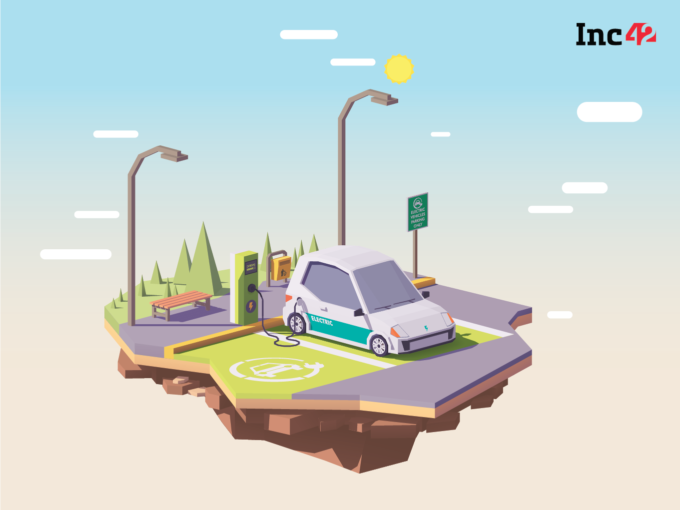Electric mobility though is still at a nascent stage in India. Presently, pure electric vehicle penetration in India is barely 0.1% in private vehicles, about 0.2% in two-wheelers and nearly zero for commercial vehicles
Three major challenges to EV adoption include, higher acquisition costs, absence of charging infrastructure and an EV manufacturing ecosystem for both vehicles and batteries
In the Union Budget 2021, the government has increased the basic customs duty in the ranges of 10-40 percentage points across EV segments.

As the Indian automobile industry aims to be among the world’s top three in automobile manufacturing by 2026, e-mobility presents just the right opportunity to do so. Aligned with growing environmental concerns, the highest ever capex of INR 1.08 Lakh Cr for the Ministry of Roads in the Union Budget 2021, focus on energy security and reduction of import bills, a holistic move towards Electric Vehicles (EVs) is a big step in the right direction. While every country has had their journey in EVs, in India, the push has been largely by two and three-wheeler EVs.
Electric mobility though is still at a nascent stage in India. Presently, pure electric vehicle penetration in India is barely 0.1% in private vehicles, about 0.2% in two-wheelers and nearly zero for commercial vehicles. Three major challenges to EV adoption include, higher acquisition costs, absence of charging infrastructure and an EV manufacturing ecosystem for both vehicles and batteries. Despite these challenges, the market for light electric commercial segment has seen a steep rise in the last few years, in passenger as well as last mile logistics. Their lower total cost of ownership and lesser operating costs have made EVs more attractive. Moreover, in the Union Budget 2021, the government has increased the basic customs duty in the ranges of 10-40 percentage points across EV segments. This will discourage low quality dumping by foreign manufacturers and boost the local manufacturing.
The pandemic, inadvertently, has accelerated the push towards EVs. It has realigned focus on environment and sustainability, with a thrust on EVs. The ecommerce and the hyperlocal delivery business have been quick adopters of EVs, partnering with multiple mobility players to cater to demand. New companies entering this space need a long-term vision. Further, the central and various state Governments have been enthused and the sentiments around EVs are now positive. With new policies and a budding start-up culture, companies are cashing on the market opportunity in sectors like two-wheelers and intra city movement. Many ecommerce giants like Flipkart and Amazon have already announced their transition to have a complete electric fleet soon, given their benefits.
According to the report by the World Economic Forum 2020 (WEF), ecommerce is set to grow exponentially in the next few years, as the safety risks due to the pandemic will linger. In the wake of this, electric vehicles in the last mile delivery within the city would become the preferred choice given the lower TCOs and operating costs for commercial uses.
In the case of last mile logistics, and doorstep deliveries EVs have played a key role during the pandemic. For consumers, EVs enable them to optimise their deliveries, and allow them to operate for more trips, lesser maintenance, and service support. Further, given the continuous surge in consumer fuel prices (Petrol has already hit INR 100-mark in some circles and diesel has not been a laggard either), EVs can easily help reduce vehicle running costs as compared to ICE vehicles. To understand this better, an average EV based two-wheeler can be fully charged for approximately 14 paisa and travel between 60- 70 kms. On the other hand, a petrol-based motorbike needs more than a liter of petrol (worth Rs 100) to travel the same distance. Thus, the economic benefits of EVs in the long run are compensated by their initial high acquisition. Top this with reduced carbon footprint and EVs become an attractive proposition. Moreover, EVs are far less complex vehicle structures and can easily help customers reduce hidden costs by modern technologies and software for fleet tracking, battery health and optimization and telematics as they are easier to integrate with sensors. When we use smarter technologies, it will eventually curb inefficiencies with respect to route optimization and entire fleet operations.
Given the huge savings on fuel intake and asset utilisation costs, EVs can also play a major role towards low cost last mile delivery in the coming days. This will lead to easing of retail prices of several items as logistics is a key component in the cost mix. The shift is already happening. With the unprecedented rise in demand for doorstep deliveries and the growth of ecommerce, EVs will be the choice for last-mile delivery. Even as the acquisition costs of an ICE are lower now, as technologies evolve and battery costs come down, EVs in the future will become more economical. On the demand side, the government, along with the industry should look at further educating consumers, bursting myths, and position EVs as the future of India’s transportation ecosystem. The shift towards electric mobility is inevitable. What we need is a steady push and an indigenous ecosystem to make EVs more affordable and accessible will be a requisite to drive this industry.









![Read more about the article [Startup Bharat] Meet the 3 friends who turned entrepreneurs with a baby apparel company](https://blog.digitalsevaa.com/wp-content/uploads/2022/02/beelittle-1644327786164-300x150.png)
